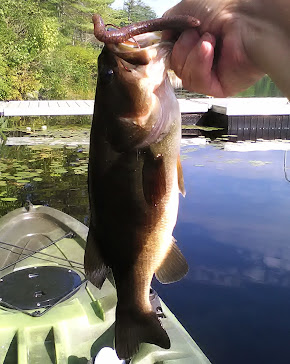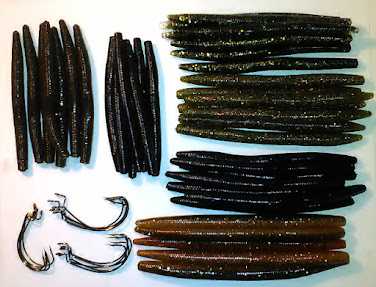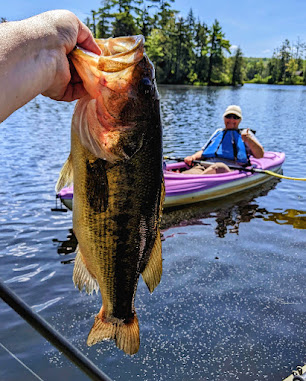Ultra-light tackle is a popular choice for anglers who enjoy the challenge of light line bass fishing.
This type of tackle set-up consists of 5.5 ft to 7 ft ultra-light power spinning rods and matching reels spooled with a 2 lb to 5 lb line and small baits for the ultimate in finesse presentations.
Here are some of the reasons why using ultra-light tackle for bass fishing is a great option for bass anglers wanting to increase their versatility and skill level:
Increased sensitivity: Ultra-light tackle is designed to be lightweight and extremely sensitive, allowing anglers to feel even the lightest bite when fishing with timy baits. This increased sensitivity can be especially useful when fishing in highly pressured waters, where bass are very finicky and often extremely spooky.
Improved finesse: Ultra-light tackle provides anglers with more control and finesse when presenting very small baits. This allows for more precise tiny bait presentations, making it easier to imitate natural prey and trigger a strike from wary fish.
Natural presentation: By using ultra-light gear, anglers can present their bait or lure in a more natural manner. The small size and light weight of the tackle allows for a delicate presentations and subtle retrieves, which can imitate the movements of local forage, making it more attractive to bass.
More enjoyable fishing experience: Fishing with ultra-light tackle can be a more enjoyable experience for anglers. Because of the light weight and sensitivity of the gear, anglers are able to feel more connected to the fish and the water. This can result in a more relaxing and fulfilling fishing trip, especially on waters where smaller bass and panfish are plentiful.
Better opportunities for catch-and-release: By using ultra-light gear, anglers tend to handle the fish more carefully and minimize the stress on the fish during the catch-and-release process. This not only benefits the individual fish, but it can also help to preserve the overall health of the fishery for future generations of anglers.
Popular ultra light lures (1/32 oz to 3/16 oz weights) that are commonly used for bass fishing:

Rapala Ultra Light Minnow: This lure is a classic and is well-suited for bass fishing in clear or shallow water.
Panther Martin Spinner: This popular in-line spinner comes in a variety of sizes and is effective for catching a variety of fish, including bass.
Strike King Bitsy Minnow: The Bitsy Minnow is a small, but effective lure that is great for catching bass in shallow water.
Rebel Wee & Teeny Crawfish: These 1/5 to 1/10 oz lures mimic the appearance and movement of a crawfish, making it a great choice for bass fishing in streams and rivers.
Mepps Aglia Ultra Lite Spinner: This small spinner is perfect for ultra light fishing in streams and rivers. Its blade creates a flash that attracts fish, and its small size makes it perfect for catching bass and other panfish.
Heddon Teeny and Tiny Torpedo: Two great topwater lures that create a lot of surface commotion, which can attract bass that are feeding on the surface.
3" & 4" Yamamoto Senko: This soft plastic bait is a popular choice for bass fishing because it is incredibly versatile and can be rigged in a variety of ways.
Johnson Beetle Spin: This lure is great for catching bass and other fish in shallow water. It features a bright spinner blade that attracts fish and a soft plastic grub that mimics a natural bait.
2" Mister Twister Grub: This lure combines the action of a jig with the appeal of a soft plastic bait, making it a great choice for bass fishing in deeper water.
Ultra-light tackle is a great option for those looking to improve their bass fishing experience. Combining increased tiny bait sensitivity, improved subtle presentations, longer battles, and more fun, it's no wonder that more and more anglers are making the switch to ultra-light tackle.



























.jpg)


















